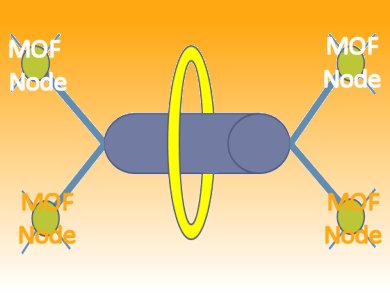Mechanically interlocked molecules such as rotaxanes and catenanes have been studied in solution as possible simple molecular switches and machines, but in this medium, the molecules are randomly dispersed and their motion incoherent.
Chemists at the University of Windsor, Ontario, Canada, have synthesized metal–organic framework (MOF) materials using a [2]rotaxane as the organic linker and binuclear copper(II) units as the nodes (pictured). The structure side-steps the issues of the incoherent and random motion of the rotaxane macrocycles seen in solution by creating a rigid framework. Activation of the MOF creates space inside the framework that allows the rotaxane to rotate rapidly, unimpeded by neighboring parts of the MOF. The dynamics of the process can be tracked with solid-state nuclear magnetic resonance spectroscopy (carbon-13 and proton).
The team suggests that this approach to controlling rotaxanes – and their chemical cousins the catenanes – may open the way to developing solid state molecular switches and machines based on interlocked molecules.
- Metal–organic frameworks with dynamic interlocked components,
V. N. Vukotic, K. J. Harris, K. Zhu, R. W. Schurko, S. J. Loeb,
Nature Chem. 2012.
DOI: 10.1038/nchem.1354




